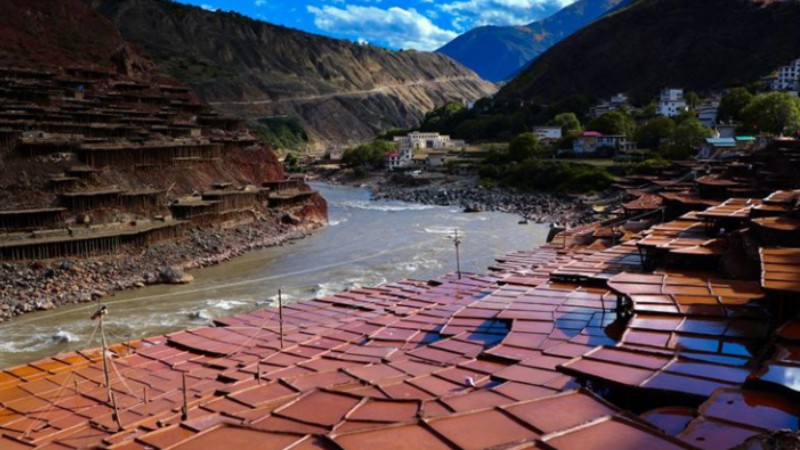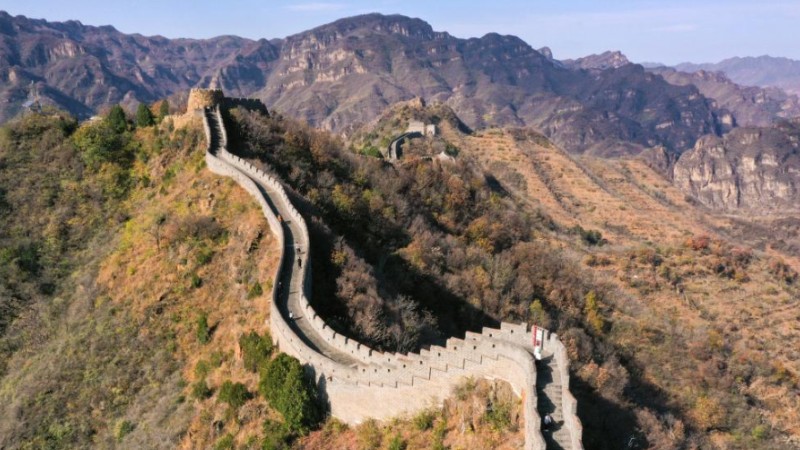Commentary: Time to discard "Shangri-la complex" in viewing Xizang
BEIJING, Nov. 10 (Xinhua) -- A white paper on Xizang, published on Friday, highlighted the great progress the southwestern Chinese autonomous region has made over the past decade.
Since 2012, Xizang has experienced a period of unprecedented development and considerable change, delivering more tangible benefits to the people, said the white paper titled "CPC Policies on the Governance of Xizang in the New Era: Approach and Achievements."
However, some Western observers, indulging in their own fantasies of Xizang, have been selectively blind to the consistent economic and social progress of the region. Curtailed by this entrenched bias, they prefer to be prisoners of their own "Shangri-la complex."
Since James Hilton's fictional "Shangri-la" first became popular some 90 years ago in the West, established perceptual prejudice has been hampering and constraining accurate knowledge concerning Xizang.
Hilton, the British novelist who never set foot in the Himalayan region, painted Xizang as a paradise of perpetual bliss where inhabitants had lived isolated, spiritual and peaceful lives since ancient times.
His romanticization of Xizang, reinforced by distorted media portrayals, has led to the consistent disregard of some obvious but inconvenient facts.
Xizang was under a feudal serfdom in Hilton's time. This form of society in Xizang was as cruel, if not worse, as its European counterparts in the Middle Ages. Serfs, who accounted for about 95 percent of the Xizang population then, were subjected to brutal economic exploitation and political oppression.
For decades, Western minds fooled by a die-hard "Shangri-la complex" have believed that Xizang should be kept pristine like an exhibit in a museum. But like any other place in the world, Xizang, which has never been utopian, also craves development.
Bidding farewell to the old Xizang, the region embarked on an irreversible path of progress after the democratic reform more than six decades ago.
Xizang's GDP reached 213.26 billion yuan (about 29.3 billion U.S. dollars) in 2022, representing an average annual growth rate of 8.6 percent since 2012. The length of the region's railway network almost doubled during this period and 5G network has covered all counties and main townships there. The region had also eradicated absolute poverty and average life expectancy of Tibetans had increased to 72.19 years by 2021.
Xizang's rapid social and economic developments have not come at the expense of its cultural tradition and religious freedom. The region has inherited and protected its fine traditional culture, and fully guaranteed freedom of religious belief. As a result, its cultural undertakings have flourished and religious activities are carried out in an orderly manner.
Xizang's achievements thus far prove that to ensure long-term stability and high-quality development in the region, the guidelines adopted by the Communist Party of China for the governance of Xizang in the new era must be fully and thoroughly implemented.
The region's development has also sent a powerful message to Western naysayers and shattered the wishful thinking of keeping Xizang in a primitive state of utopia which never existed in the first place but was based on a work of fiction.
For some Westerners, it might not be easy to abandon their entrenched perceptual bias regarding Xizang, but it is a crucial first step one must take in order to form a balanced and accurate understanding of today's Xizang.
Photos
Related Stories
- Nearly 90 pct deputies to people's congresses in Xizang from ethnic groups: white paper
- Xizang maintains sustainable, sound and rapid economic development: white paper
- Xizang experiencing period of unprecedented development: white paper
- Xizang continues to improve eco-environmental governance system: white paper
- Great progress registered in scientific surveys, technological breakthroughs on Qinghai-Tibet Plateau: white paper
Copyright © 2023 People's Daily Online. All Rights Reserved.









